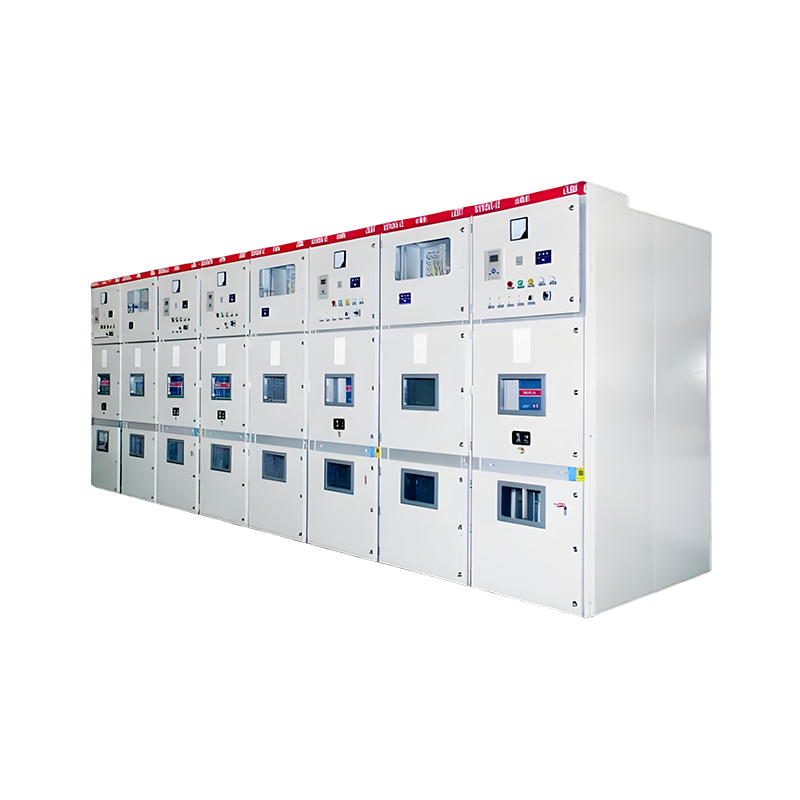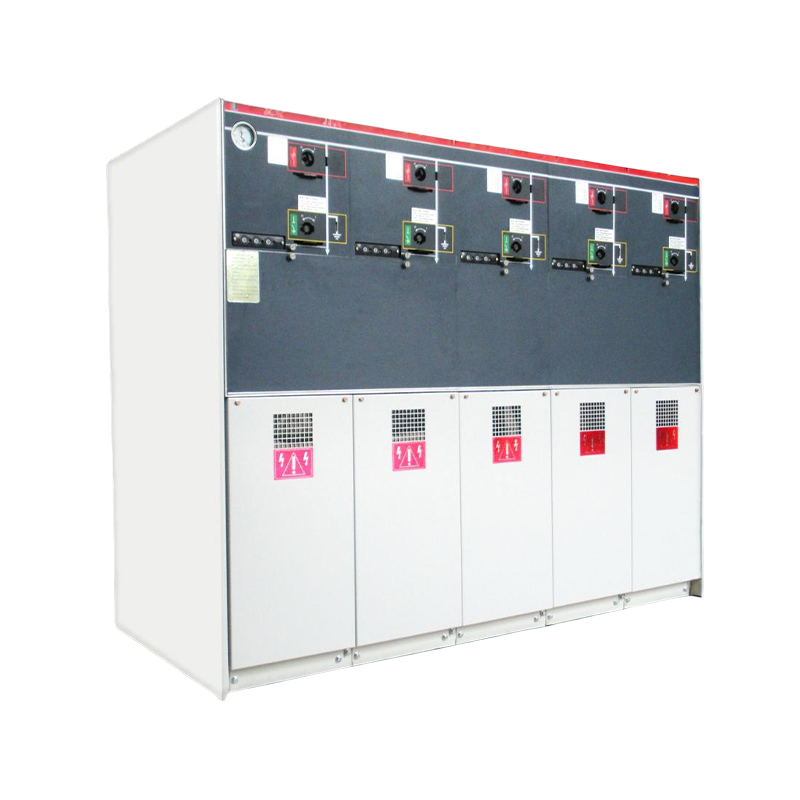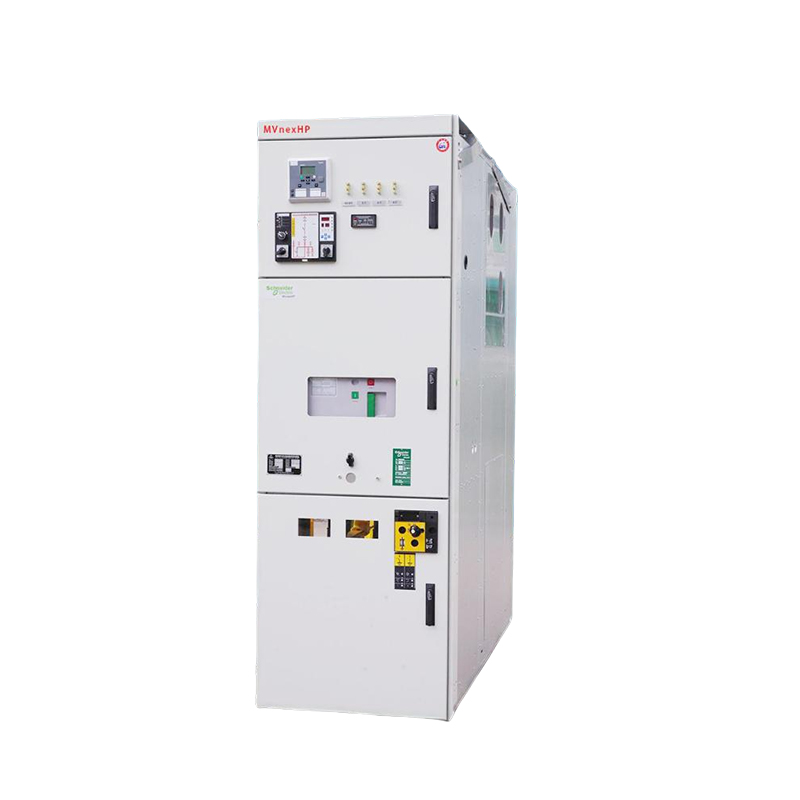How can AC low-voltage cabinets improve operational convenience?
Release Time : 2025-10-18
In modern industrial and public utility power systems, AC low-voltage cabinets are not only the core hub of power distribution but also crucial equipment for ensuring power supply security and improving operational efficiency. This is particularly true in power plants, substations, factories, mines, and large enterprises, where operators frequently inspect, open and close circuits, troubleshoot, and adjust circuits in distribution cabinets. Therefore, operational convenience has become a crucial criterion for evaluating the design quality of low-voltage distribution cabinets. Advanced products, such as the GGD AC low-voltage cabinet, significantly enhance intuitive operation, safety, and efficiency through structural optimization, ergonomic design, and functional integration. The following analyzes how they achieve this from multiple perspectives.
1. Humanized Cabinet Design Optimizes Operating Space and Visibility
The GGD low-voltage cabinet features front and rear doors or a dual-sided operation structure. The front is used for daily operations and monitoring, while the back or side panels facilitate easy access for maintenance and wiring. The cabinet doors typically open at an angle greater than 120 degrees and are equipped with soft-close hinges, ensuring smooth opening even in confined distribution rooms and providing ample operating space for operators. Furthermore, instruments, indicator lights, buttons, and circuit breaker handles are concentrated in the upper center of the cabinet front—an ergonomically designed "golden operating zone" that allows operators to perform routine operations without bending or standing on tiptoe. Transparent or graduated windows allow for intuitive viewing of switch status and instrument readings without power interruption, significantly improving inspection efficiency.
2. Standardized and Modular Layout Streamlines Operation
GGD cabinets emphasize flexible electrical solutions and easy assembly. Their internal functional units utilize a standardized modular design. Circuits with the same function utilize a unified component layout, labeling system, and wiring scheme, enabling operators to quickly identify circuit functions even across multiple cabinets, reducing the risk of misoperation. All circuit breaker handle positions, label numbers, and phase sequence markings are standardized. Clear system diagrams and circuit lists ensure rapid familiarity for new employees. This "what you see is what you get" design significantly reduces operational complexity and is particularly suitable for industrial sites requiring rapid switching or emergency response.
3. High protection levels and safety interlock mechanisms ensure safety while ensuring convenience
Convenience never comes at the expense of safety. GGD cabinets typically feature IP30 to IP40 protection levels, effectively preventing fingers or tools from accidentally touching live components. Furthermore, key operating procedures are equipped with multiple safety interlocks. For example, the functional unit compartment can only be opened when the circuit breaker is in the OFF position; a mechanical interlock between the earthing switch and the main switch prevents the earthing switch from being closed while energized. Some high-end models even incorporate "five-protection" logic to ensure that operating sequences comply with safety regulations. These designs not only simplify compliance procedures but also eliminate potential operational errors at the source, truly embodying the concept of "safety is convenience."
4. Clear labeling and intelligent assistance improve information access efficiency
Modern GGD cabinets pay careful attention to detail in conveying information efficiently. All circuits are equipped with durable, high-contrast labels containing key information such as number, purpose, and load type. Cables are both color-coded and numbered for quick location. Some products integrate intelligent monitoring modules, such as real-time displays of current, voltage, and power factor, and even support remote communication. Operators can quickly assess system status via the local display or mobile app, eliminating the need to carry additional instruments. This "information-front" design simplifies the traditionally cumbersome measurement and recording process to a single glance or one-click query, significantly improving operational response times.
5. Maintenance-Friendly Design Reduces Downtime
When replacing components or troubleshooting, the GGD cabinet's retractable mounting rails, quick-release terminal blocks, and independent functional compartments make maintenance more efficient. For example, molded case circuit breakers can be fully withdrawn for replacement without removing the main busbars. Terminal blocks utilize either press-fit or plug-in design, reducing screw tightening time. Ample wiring space and cable management troughs are provided within the cabinet to prevent cable clutter and disrupt operations. These details, though minor, can save valuable time during emergency repairs, truly embodying the principle of "convenience equals productivity."
In summary, the operational convenience of AC low-voltage cabinets isn't simply a matter of a single function; it's the result of coordinated optimization across multiple dimensions, encompassing structure, safety, information, and maintenance. The GGD cabinet, with its innovative structure, standardized design, and user-friendly details, provides operators with an efficient, intuitive, and safe work interface while ensuring high interrupting capacity and system stability. As power systems become increasingly complex and operational and maintenance requirements continue to rise, this "people-centric" design philosophy is becoming a crucial direction for upgrading low-voltage distribution equipment.
1. Humanized Cabinet Design Optimizes Operating Space and Visibility
The GGD low-voltage cabinet features front and rear doors or a dual-sided operation structure. The front is used for daily operations and monitoring, while the back or side panels facilitate easy access for maintenance and wiring. The cabinet doors typically open at an angle greater than 120 degrees and are equipped with soft-close hinges, ensuring smooth opening even in confined distribution rooms and providing ample operating space for operators. Furthermore, instruments, indicator lights, buttons, and circuit breaker handles are concentrated in the upper center of the cabinet front—an ergonomically designed "golden operating zone" that allows operators to perform routine operations without bending or standing on tiptoe. Transparent or graduated windows allow for intuitive viewing of switch status and instrument readings without power interruption, significantly improving inspection efficiency.
2. Standardized and Modular Layout Streamlines Operation
GGD cabinets emphasize flexible electrical solutions and easy assembly. Their internal functional units utilize a standardized modular design. Circuits with the same function utilize a unified component layout, labeling system, and wiring scheme, enabling operators to quickly identify circuit functions even across multiple cabinets, reducing the risk of misoperation. All circuit breaker handle positions, label numbers, and phase sequence markings are standardized. Clear system diagrams and circuit lists ensure rapid familiarity for new employees. This "what you see is what you get" design significantly reduces operational complexity and is particularly suitable for industrial sites requiring rapid switching or emergency response.
3. High protection levels and safety interlock mechanisms ensure safety while ensuring convenience
Convenience never comes at the expense of safety. GGD cabinets typically feature IP30 to IP40 protection levels, effectively preventing fingers or tools from accidentally touching live components. Furthermore, key operating procedures are equipped with multiple safety interlocks. For example, the functional unit compartment can only be opened when the circuit breaker is in the OFF position; a mechanical interlock between the earthing switch and the main switch prevents the earthing switch from being closed while energized. Some high-end models even incorporate "five-protection" logic to ensure that operating sequences comply with safety regulations. These designs not only simplify compliance procedures but also eliminate potential operational errors at the source, truly embodying the concept of "safety is convenience."
4. Clear labeling and intelligent assistance improve information access efficiency
Modern GGD cabinets pay careful attention to detail in conveying information efficiently. All circuits are equipped with durable, high-contrast labels containing key information such as number, purpose, and load type. Cables are both color-coded and numbered for quick location. Some products integrate intelligent monitoring modules, such as real-time displays of current, voltage, and power factor, and even support remote communication. Operators can quickly assess system status via the local display or mobile app, eliminating the need to carry additional instruments. This "information-front" design simplifies the traditionally cumbersome measurement and recording process to a single glance or one-click query, significantly improving operational response times.
5. Maintenance-Friendly Design Reduces Downtime
When replacing components or troubleshooting, the GGD cabinet's retractable mounting rails, quick-release terminal blocks, and independent functional compartments make maintenance more efficient. For example, molded case circuit breakers can be fully withdrawn for replacement without removing the main busbars. Terminal blocks utilize either press-fit or plug-in design, reducing screw tightening time. Ample wiring space and cable management troughs are provided within the cabinet to prevent cable clutter and disrupt operations. These details, though minor, can save valuable time during emergency repairs, truly embodying the principle of "convenience equals productivity."
In summary, the operational convenience of AC low-voltage cabinets isn't simply a matter of a single function; it's the result of coordinated optimization across multiple dimensions, encompassing structure, safety, information, and maintenance. The GGD cabinet, with its innovative structure, standardized design, and user-friendly details, provides operators with an efficient, intuitive, and safe work interface while ensuring high interrupting capacity and system stability. As power systems become increasingly complex and operational and maintenance requirements continue to rise, this "people-centric" design philosophy is becoming a crucial direction for upgrading low-voltage distribution equipment.







